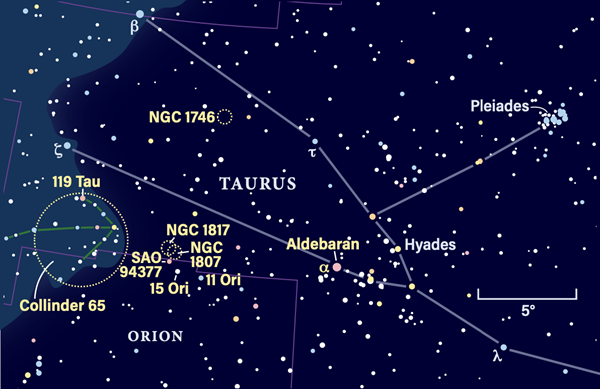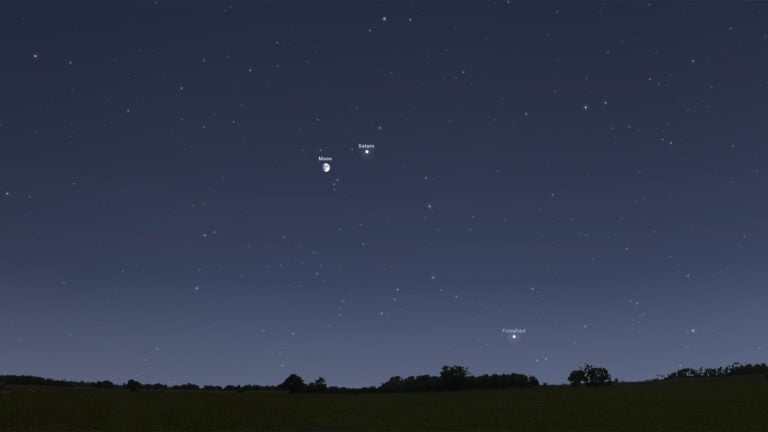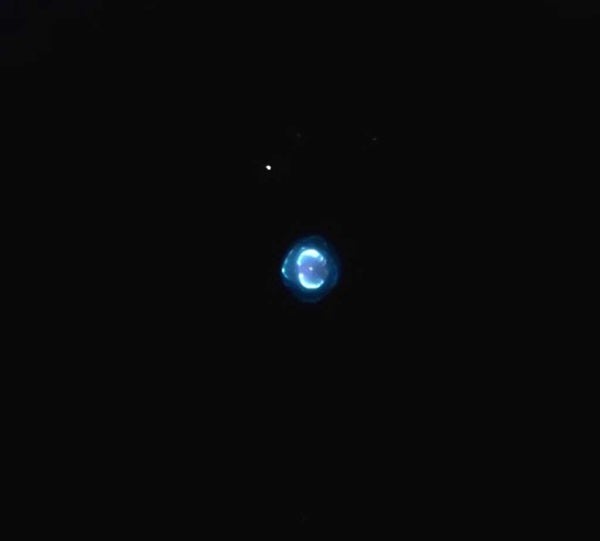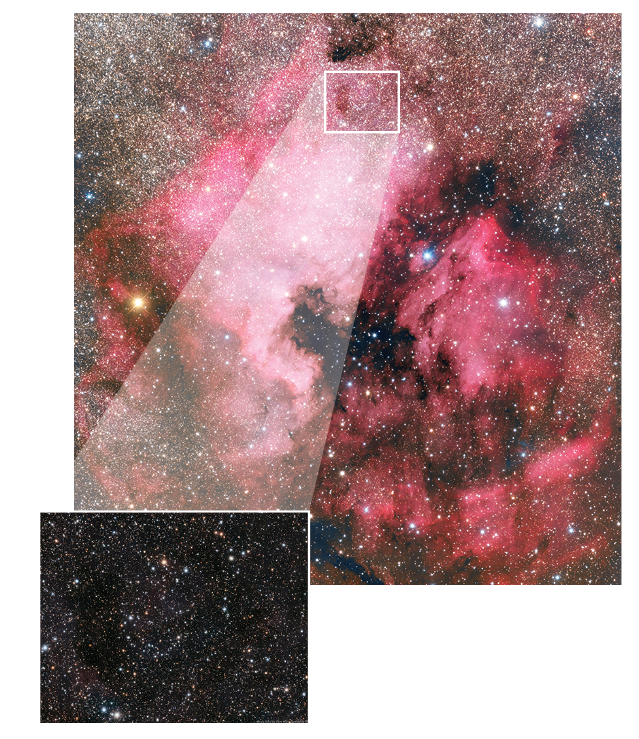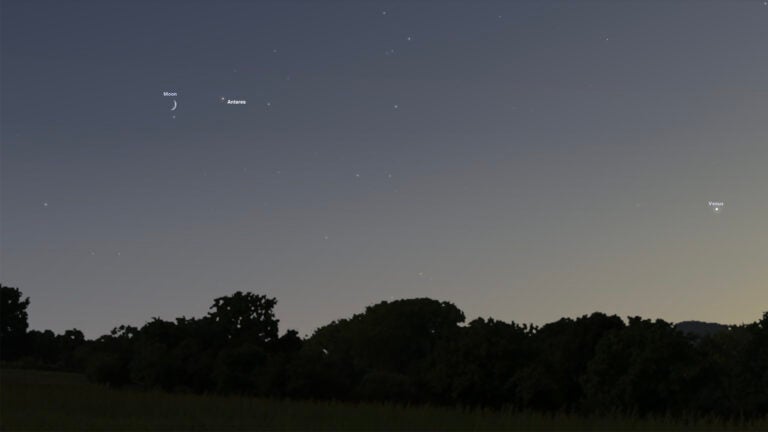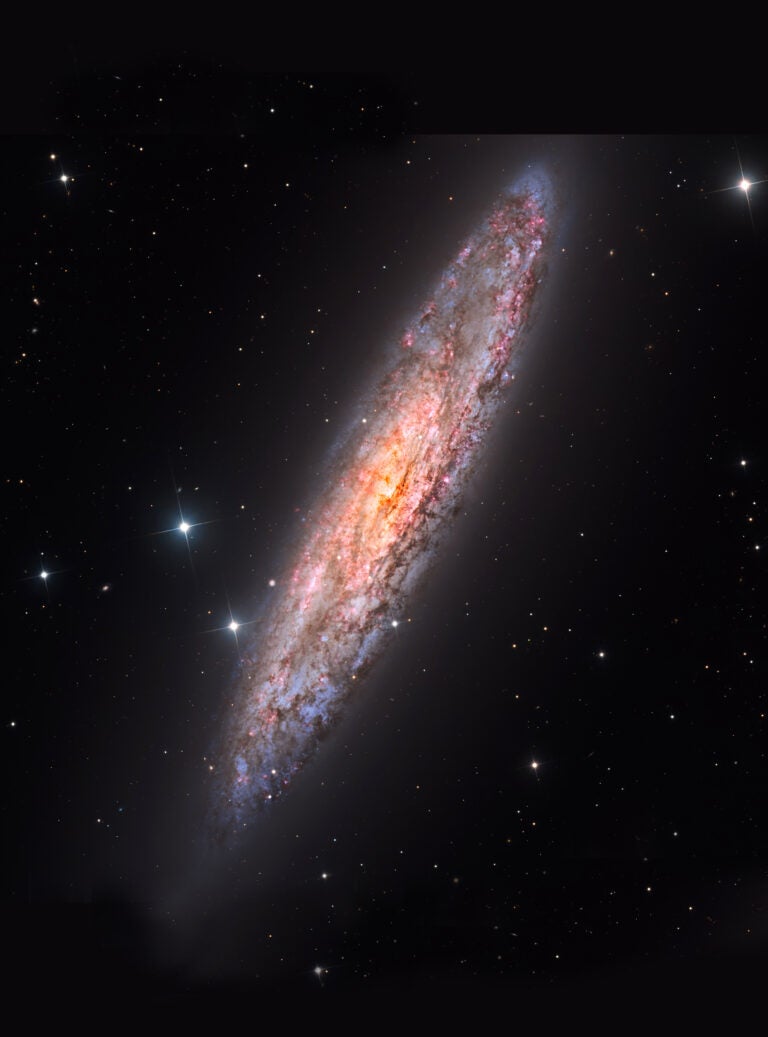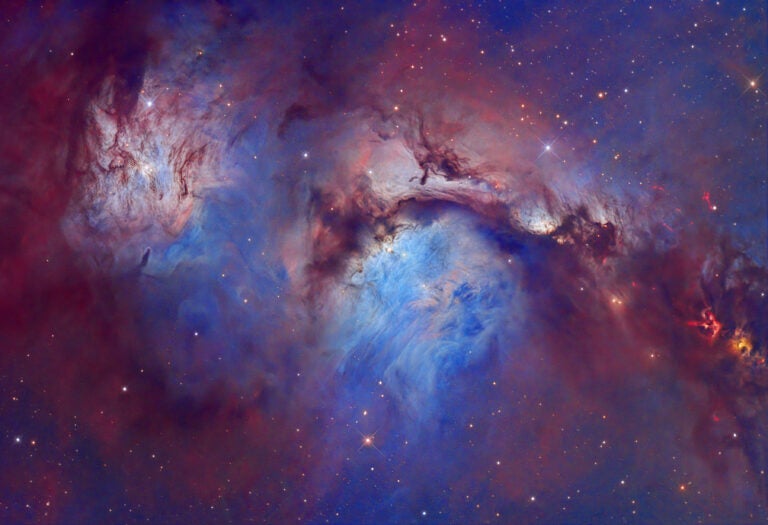This month, all eyes will be on Mars as it reaches opposition on Dec. 8, within everyone’s favorite bull, Taurus. In addition to the Red Planet, Taurus is home to many striking deep-sky targets. You may be familiar with its two most arresting open star clusters, the Pleiades (M45) and the Hyades (Melotte 25). But what about others that are often overlooked?
Let’s begin our journey at Aldebaran (Alpha [α] Tauri), the Bull’s angry red eye. After you have enjoyed it, shift your attention 8½°, or about one and a half binocular fields, due east. There, you’ll find an arc of three approximately 5th-magnitude stars formed by 11 Orionis, 15 Orionis, and SAO 94377. Two NGC star clusters are ½° north of the latter (an orangish star) and appear less than a Moon’s diameter from each other. They form a pseudo-Double Cluster of sorts.
The western member of the pair, NGC 1807, contains about three dozen stars and has an apparent diameter of 17′. Due to the compactness of the grouping, binoculars may have a difficult time resolving individual members. The brightest stars, however, give the cluster a triangular shape tilted toward the southeast with 8th-magnitude SAO 94371 marking the triangle’s tip.
Although many references still list NGC 1807 as an open star cluster, some studies — including a paper published in Astronomy & Astrophysics in 2018 — suggest it is an illusion caused by several stars at varying distances lying along the same line of sight as seen from Earth. The authors determined that since the stars show different proper motions, they are not traveling as a group through the Milky Way.
The same paper proved that the eastern member of the duo, NGC 1817, is the real deal. However, it’s tougher to spot, despite containing more than 200 stars by some counts. Its three brightest, shining at only 9th magnitude, form a faint triangle along the cluster’s western edge that seems to point back toward NGC 1807. The rest, at 10th magnitude and fainter, blend into a feeble glow.
Scan east of the Taurus Double Cluster and you’ll notice a broad, arrowhead-shaped pattern of about half a dozen 5th- and 6th-magnitude stars aimed back at NGC 1817. Notably, the northern barb of the arrow is marked by orange 119 Tauri. Also known as CE Tauri, this semi-regular variable fluctuates slightly between magnitudes 4.2 and 4.5.
From the arrow’s base, look for a curved shaft of seven or more stars hooking southeastward toward Orion the Hunter’s raised arm. Combined, I think of this asterism as Orion’s Spear, since it looks as though he threw it at Taurus before raising his sword.
While the stars in the spear’s curved shaft bear no physical relation to each other, many in the spearhead belong to the widespread open cluster Collinder 65. The cluster has 11 members centered on 6th-magnitude 113 Tauri and spans the spearhead’s central 3°. It’s difficult to tell the true cluster members apart from the field stars, since there are about 20 stars brighter than 8th magnitude within the cluster’s borders. But together, they fill in the spearhead’s form.
Finally, let’s shift northward to Mars and use the Red Planet to revisit NGC 1746. We stopped by this object back in the January 2019 issue, but since Mars is standing close by all month, I thought it worth revisiting. The two will appear closest together on Dec. 3/4, when Mars is just 1° north of the cluster. Mars stays within a 7°-wide region — roughly a binocular field — centered on NGC 1746 from Nov. 26 until Dec. 12.
I’d like to close by tipping my hat to Glenn Chaple, whose final Observing Basics column appears in this issue. I have known Glenn for decades and we see each other every summer at Stellafane. It has been an honor and a pleasure to share these pages with him for so many years.
Questions, comments, suggestions for future columns? Contact me through my website, philharrington.net. Until next time, remember that two eyes are better than one.

